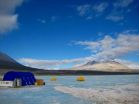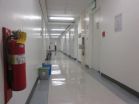(Press-News.org) (NEW YORK, N.Y., November 26, 2012) – Autism Speaks Chief Science Officer Geraldine Dawson, Ph.D. describes how the dramatic progress in autism research has paralleled increased recognition of autism's prevalence and financial impact in the December issue of the Archives of General Psychiatry published on line today. "This issue of the journal features three articles on autism," she writes in her editorial. "A decade ago, the journal published about the same number of autism articles per year."
Dr. Dawson also notes that, while the funding for autism research has dramatically increased over the last decade, it hasn't kept pace with the increasing scale of the public health challenges posed by autism. Despite an increase in research and funding, "we have not yet fully described the causes of ASD or developed effective medical treatments for it," Dr. Dawson writes. "[This issue's] articles point to an urgent need for more autism funding. We especially need more research on prenatal and early postnatal brain development in autism, with a focus on how genes and environmental risk factors combine to increase risk for ASD." Dawson also noted that research on treatment and adults with autism have been neglected and more research on these topics is needed.
Research presented in this issue reports a three-fold increase in autism risk associated with exposure to high levels of traffic-related air pollution during pregnancy and the first year of life. The study's lead author, Heather Volk, Ph.D., M.P.H., is the recipient of an Autism Speaks research grant to study autism risk and gene-environment interactions involving air pollution.
Two studies in this issue involve novel neuroimaging approaches. One confirms an association between autism and changes in immune function. This study is the first to use new brain imaging techniques to demonstrate immune function changes in adults with autism. Specifically, it documented higher than normal levels of microglial activation in the brain in adults with autism spectrum disorders. Microglial cells are the brain's first and primary immune defense. Another utilizes novel magnetic resonance imaging (MRI) data to examine the role of cortical volume in ASD, comparing young adult males on the spectrum to neurotypical control adults. The key finding is that differences in brain volume are determined by surface area, not cortical thickness, shedding light on mechanisms that might account for early brain overgrowth in individuals with ASD.
"More research is needed to develop strategies for preventing or reducing the disabling symptoms associated with this highly prevalent and costly neurodevelopmental disorder," Dr. Dawson concludes.
INFORMATION:
About Autism
Autism is a general term used to describe a group of complex developmental brain disorders – autism spectrum disorders – caused by a combination of genes and environmental influences. These disorders are characterized, in varying degrees, by communication difficulties, social and behavioral challenges, as well as repetitive behaviors. An estimated 1 in 88 children in the U.S. is on the autism spectrum – a 78 percent increase in six years that is only partly explained by improved diagnosis.
About Autism Speaks
Autism Speaks is the world's leading autism science and advocacy organization. It is dedicated to funding research into the causes, prevention, treatments and a cure for autism; increasing awareness of autism spectrum disorders; and advocating for the needs of individuals with autism and their families. Autism Speaks was founded in February 2005 by Suzanne and Bob Wright, the grandparents of a child with autism. Mr. Wright is the former vice chairman of General Electric and chief executive officer of NBC and NBC Universal. Since its inception, Autism Speaks has committed over $180 million to research and developing innovative resources for families. Each year Walk Now for Autism Speaks events are held in more than 95 cities across North America. On the global front, Autism Speaks has established partnerships and related activities in over 40 countries on 5 continents to foster international research, services and awareness. To learn more about Autism Speaks, please visit AutismSpeaks.org.
Dramatic rise in autism prevalence parallels research explosion
According to commentary by Autism Speaks Chief Science Officer featured in Archives of General Psychiatry
2012-11-27
ELSE PRESS RELEASES FROM THIS DATE:
University of Maryland School of Medicine, NIH study pinpoints brain area's role in learning
2012-11-27
An area of the brain called the orbitofrontal cortex is responsible for decisions made on the spur of the moment, but not those made based on prior experience or habit, according to a new basic science study from substance abuse researchers at the University of Maryland School of Medicine and the National Institute on Drug Abuse (NIDA). Scientists had previously believed that the area of the brain was responsible for both types of behavior and decision-making. The distinction is critical to understanding the neurobiology of decision-making, particularly with regard to substance ...
Algae Biomass Organization hails new UCSD study showing saltwater algae viable for biofuels
2012-11-27
SAN DIEGO, Calif. (November 26, 2012) The Algae Biomass Organization, the trade association for the U.S. algae industry today hailed the findings of a University of California at San Diego study that concludes, for the first time, that marine (saltwater) algae can be just as capable as freshwater algae in producing biofuels. The research is documented in a peer-reviewed paper published online in the current issue of the scientific journal Algal Research.
"What this means is that you can use ocean water to grow the algae that will be used to produce biofuels. And once ...
Hearty organisms discovered in bitter-cold Antarctic brine
2012-11-27
EAST LANSING, Mich. — Where there's water there's life – even in brine beneath 60 feet of Antarctic ice, in permanent darkness and subzero temperatures.
While Lake Vida, located in the northernmost of the McMurdo Dry Valleys of East Antarctica, will never be a vacation destination, it is home to some newly discovered hearty microbes. In the current issue of the Proceedings of the National Academy of Sciences, Nathaniel Ostrom, Michigan State University zoologist, has co-authored "Microbial Life at -13ºC in the Brine of an Ice-Sealed Antarctic Lake."
Ostrom was part ...
Alaska's iconic Columbia Glacier expected to stop retreating in 2020, says CU-Boulder study
2012-11-27
The wild and dramatic cascade of ice into the ocean from Alaska's Columbia Glacier, an iconic glacier featured in the documentary "Chasing Ice" and one of the fastest moving glaciers in the world, will cease around 2020, according to a study by the University of Colorado Boulder.
A computer model predicts the retreat of the Columbia Glacier will stop when the glacier reaches a new stable position -- roughly 15 miles upstream from the stable position it occupied prior to the 1980s. The team, headed by lead author William Colgan of the CU-Boulder headquartered Cooperative ...
Gastric bypass surgery helps diabetes but doesn't cure it
2012-11-27
SEATTLE—After gastric bypass surgery, diabetes goes away for some people—often even before they lose much weight. So does that mean gastric surgery "cures" diabetes? Not necessarily, according to the largest community-based study of long-term diabetes outcomes after bariatric surgery. For most people in the study, e-published in advance of print in Obesity Surgery, diabetes either never remitted after gastric surgery or relapsed within five years.
Among the two thirds of the study's patients whose diabetes at first went away, more than a third re-developed diabetes again ...
To get the best look at a person's face, look just below the eyes, according to UCSB researchers
2012-11-27
They say that the eyes are the windows to the soul. However, to get a real idea of what a person is up to, according to UC Santa Barbara researchers Miguel Eckstein and Matt Peterson, the best place to check is right below the eyes. Their findings are published in the Proceedings of the National Academy of Sciences.
"It's pretty fast, it's effortless –– we're not really aware of what we're doing," said Miguel Eckstein, professor of psychology in the Department of Psychological & Brain Sciences. Using an eye tracker and more than 100 photos of faces and participants, Eckstein ...
Penn researchers make flexible, low-voltage circuits using nanocrystals
2012-11-27
PHILADELPHIA — Electronic circuits are typically integrated in rigid silicon wafers, but flexibility opens up a wide range of applications. In a world where electronics are becoming more pervasive, flexibility is a highly desirable trait, but finding materials with the right mix of performance and manufacturing cost remains a challenge.
Now a team of researchers from the University of Pennsylvania has shown that nanoscale particles, or nanocrystals, of the semiconductor cadmium selenide can be "printed" or "coated" on flexible plastics to form high-performance electronics.
The ...
Did you see that? How could you miss it?
2012-11-27
You may have received CPR training some time ago, but would you remember the proper technique in an emergency? Would you know what to do in the event of an earthquake or a fire? A new UCLA psychology study shows that people often do not recall things they have seen — or at least walked by — hundreds of times.
For the study, 54 people who work in the same building were asked if they knew the location of the fire extinguisher nearest their office. While many of the participants had worked in their offices for years and had passed the bright red extinguishers several times ...
Study advances use of stem cells in personalized medicine
2012-11-27
Johns Hopkins researchers report concrete steps in the use of human stem cells to test how diseased cells respond to drugs. Their success highlights a pathway toward faster, cheaper drug development for some genetic illnesses, as well as the ability to pre-test a therapy's safety and effectiveness on cultured clones of a patient's own cells.
The project, described in an article published November 25 on the website of the journal Nature Biotechnology, began several years ago, when Gabsang Lee, D.V.M., Ph.D., an assistant professor at the Johns Hopkins University School ...
Genome decoded: Scientists find clues to more disease-resistant watermelons
2012-11-27
ITHACA, N.Y. – Are juicier, sweeter, more disease-resistant watermelons on the way? An international consortium of more than 60 scientists from the United States, China, and Europe has published the genome sequence of watermelon (Citrullus lanatus) — information that could dramatically accelerate watermelon breeding toward production of a more nutritious, tastier and more resistant fruit. The watermelon genome sequence was published in the Nov. 25 online version of the journal Nature Genetics.
The researchers discovered that a large portion of disease resistance genes ...
LAST 30 PRESS RELEASES:
New expert guidance urges caution before surgery for patients with treatment-resistant constipation
Solar hydrogen can now be produced efficiently without the scarce metal platinum
Sleeping in on weekends may help boost teens’ mental health
Study: Teens use cellphones for an hour a day at school
After more than two years of war, Palestinian children are hungry, denied education and “like the living dead”
The untold story of life with Prader-Willi syndrome - according to the siblings who live it
How the parasite that ‘gave up sex’ found more hosts – and why its victory won’t last
When is it time to jump? The boiling frog problem of AI use in physics education
Twitter data reveals partisan divide in understanding why pollen season's getting worse
AI is quick but risky for updating old software
Revolutionizing biosecurity: new multi-omics framework to transform invasive species management
From ancient herb to modern medicine: new review unveils the multi-targeted healing potential of Borago officinalis
Building a global scientific community: Biological Diversity Journal announces dual recruitment of Editorial Board and Youth Editorial Board members
Microbes that break down antibiotics help protect ecosystems under drug pollution
Smart biochar that remembers pollutants offers a new way to clean water and recycle biomass
Rice genes matter more than domestication in shaping plant microbiomes
Ticking time bomb: Some farmers report as many as 70 tick encounters over a 6-month period
Turning garden and crop waste into plastics
Scientists discover ‘platypus galaxies’ in the early universe
Seeing thyroid cancer in a new light: when AI meets label-free imaging in the operating room
Neutrophil-to-lymphocyte ratio may aid risk stratification in depressive disorder
2026 Seismological Society of America Annual Meeting
AI-powered ECG analysis offers promising path for early detection of chronic obstructive pulmonary disease, says Mount Sinai researchers
GIMM uncovers flaws in lab-grown heart cells and paves the way for improved treatments
Cracking the evolutionary code of sleep
Medications could help the aging brain cope with surgery, memory impairment
Back pain linked to worse sleep years later in men over 65, according to study
CDC urges ‘shared decision-making’ on some childhood vaccines; many unclear about what that means
New research finds that an ‘equal treatment’ approach to economic opportunity advertising can backfire
Researchers create shape-shifting, self-navigating microparticles
[Press-News.org] Dramatic rise in autism prevalence parallels research explosionAccording to commentary by Autism Speaks Chief Science Officer featured in Archives of General Psychiatry




